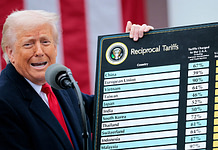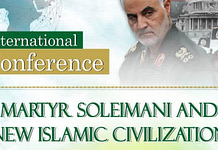In spite of its great climatic and geo-morphologic heterogeneity, of its diverse ethnic groups, of its large variety of cultures and religions, and of the consequent lack in socioeconomic homogeneity, India seems to have successfully followed the rule that made the ancient Empires great, i.e. the preservation of unity in diversity. However, the “miracle” of the Indian national unity is due not only to the constitutional law or to the form of federal government that the densely-populated Euro-Asiatic peninsula has adopted following the Independence of 1947, and not even to the fact that the Union would be, according to a worn-out slogan enjoying great favour until recently, the “greatest democracy in the world”. The preservation of unity in such a diversified national system, moreover marked by conflicts, could be more clearly explained both by a widespread specific political culture among the intellectual and political élite in the country, and by the balance between two power systems: one operating within the frame of Asian geopolitics, the other represented by the western expansionism in the Euro-Asian landmass.
The peculiar political culture of India has often been referred to as “laical” and “secular” by virtue of its patent tolerance, and indeed in 1976 the terms “socialist” and “secular” have been added to the Constitution in the definition of India as democratic sovereign Republic.
However, it is more appropriate to consider it as resulting from the great, diversified and long lasting traditions present in the entire history of India – either the Hindu, or the Buddhist, or the Islamic traditions – rather than to the modern concept of democracy imported from the West. In fact, this last doesn’t fit well with the management of such a complex system moreover organized on different communities, as the Indian one is.
As for the geopolitics, it should be pointed out that the presence in Asia of two additional great entities, such as China and Russia, as well as the uninterrupted pressure from the western countries under the leadership of the USA, have pushed India to establish distinct relationships with Beijing and Moscow, however sharing with them the contrast towards the western political, economical and military expansionism.
Such political trends basically based on the balance between Euro-Asian power and western power, has enabled India to maintain the unity of the Country, even if among many economic and social difficulties and centrifugal forces. Furthermore India has been able to chooce with a certain degree of independence its own energy strategy (the nuclear choice), and industrial strategy, including both civil and military industry (ballistic arms, aerospace, Navy and merchant navy).
In the space of its short existence, the Union has obtained good results operating in different geopolitical contexts the right choices, always asserting its own autonomy.
During the bipolar period, that Indian leaders felt as the long era of de-colonization, New Delhi, despite the solid axis with Moscow, motivated by the perceived threat potentially coming from the land (terrestrial threat) and constituted especially by Beijing and Islamabad, stressed its independence from the logic of two blocks, symbolically and practically, joining the Non-Aligned Movement and waiving the nuclear Non-Proliferation Treaty.
In the context of the “unipolar moment”, India adopted the doctrine of concentric circles proposed by Minister Gujral. This particular geopolitical doctrine basically focused on the three following elements: regional cooperation policy; enhancement of its geopolitical autonomy; and massive economic and industrial growth that occurred during those years, allowed India to emerge as the dominant player in South Asian area.
Today, in the frame of a decidedly emerging multipolar or, according to the definition of some analysts, polycentric system, the perception of the terrestrial threat and the oceanic dimension still seem to be the coordinates within which New Delhi implements its own geopolitics. This latter one (which more or less includes the Gujral Doctrine items) aims to provide India the status of regional and, under some aspects, global power. India’s today geopolitics is articulated in at least four main areas which concern respectively the regional chessboard, the South East and East, the Gulf and South-South vector interests, which involves India, Africa and South America.
To the four areas outlined above, synergistically aimed to reaffirm the independence of India on the world stage, we have to add some strategic alliances that New Delhi is cultivating with Moscow and, most recently, with China in order to achieve stability in Central Asia.
Regarding the regional arena, despite the war in Afghanistan and difficult relations with Pakistan and Bangladesh, India, through a deliberate and bilateral policy of negotiation with the countries of the area, joined in the Association for South Asian Regional Cooperation (Bangladesh, Bhutan, Maldives, Nepal, Pakistan, Sri Lanka, Afghanistan), in the space of few years, has reached an important role which candidates New Delhi to act as a pivot of the whole area.
In view of consolidating its geopolitical potential, India seeks to ensure strategic and enduring friendships in East and Asian Southeast, based on mutual convenience. The countries where New Delhi focuses its attention are, in particular, Indonesia and Japan. Friendship with Jakarta and Tokyo, which, as is well known, support respectively the Union’s space programs and industrial development, is, for New Delhi, also a kind of geopolitical device in relation to the up and down relationship with Beijing.
Regarding West, however, India seems to play the card of cooperation. India, in need of energy supplies useful for developing and enhancing its industry, maintains important relationships with the Gulf Cooperation Council, which includes Saudi Arabia, Oman, Kuwait, Bahrain, Qatar and United Arab Emirates and the Islamic Republic of Iran.
Nominating itself as an indispensable interlocutor and a good customer for the Gulf countries, India has secured a way of westward expansion. It should be noted that if the relationship between New Delhi and Tehran plays a vital geo-political significance within the containment strategy of Pakistan, the same could become, in the medium term, problematic with regard to the relations with Tel Aviv and also be manipulated by Washington, whenever India should take pro-Eurasian positions on the Iranian nuclear issue.
In the context of South-South Cooperation, New Delhi has built over the past ten years, very strong relationships with Brasilia and Pretoria, competing in some respects, even with China. Considering the close relations between India and Australia and the centrality of the Indian peninsula in the homonymous Ocean, the agreements with Brazil and South Africa, which India is also associated within the IBSA Forum (India, Brazil, South Africa), seem to take a geopolitical specificity useful to consolidate the multipolar system, the emergence of Australia as a new regional player and finally the strengthening of New Delhi on the global arena.
The efforts currently led by India to maintain its independence, its unity and economic and industrial development will be winning, in the medium and long term, only if New Delhi will focus its geopolitical interests on the framework of a Eurasian and multipolar perspective. Such perspective, in fact, would solve its choice between being a mere regional power with international aspirations or a global power with regional interests.
*Tiberio Graziani is director of Eurasia. Rivista di Studi Geopolitici and president of IsAG (Istituto di Alti Studi in Geopolitica e Scienze Ausiliarie)
Questo articolo è coperto da ©Copyright, per cui ne è vietata la riproduzione parziale o integrale. Per maggiori informazioni sull'informativa in relazione al diritto d'autore del sito visita Questa pagina.




















